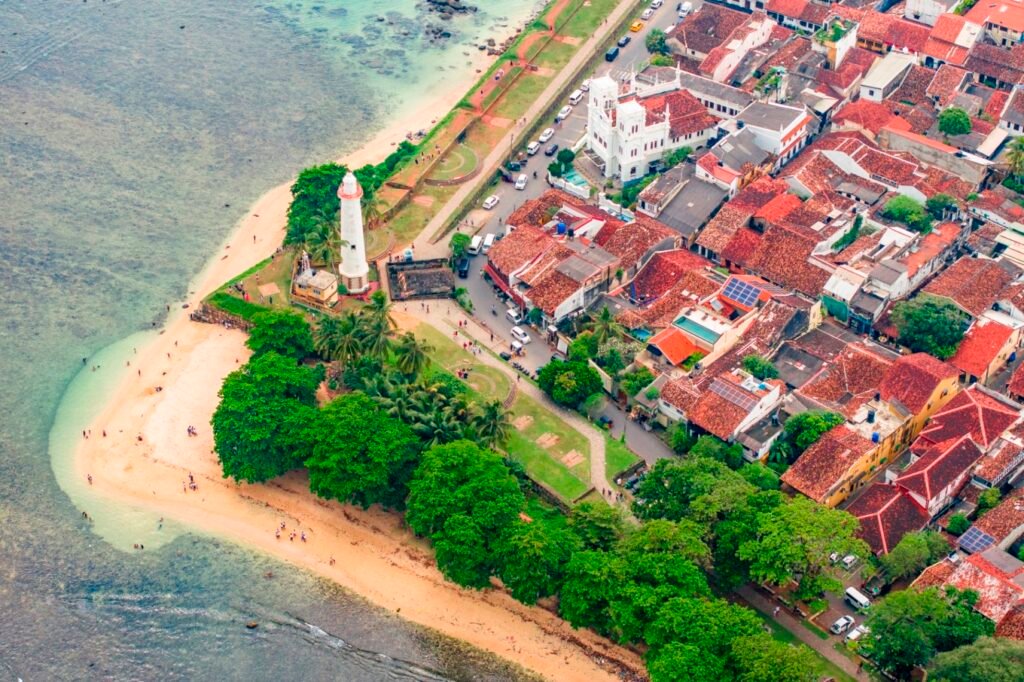Located at the southwestern tip of Sri Lanka, the city of Galle is a small port town surrounded by the sea on three sides. Situated in the heart of the Indian Ocean, this geographical advantage made Galle one of the important hubs during the Age of Exploration for voyages from Europe to the Far East. The various colonial-era buildings add a touch of classical charm to this old city.
Galle is a city with a long history and is one of Sri Lanka’s four major economic centers. Its earliest history can be traced back to around the first century AD during the time of King Solomon of Israel. King Solomon used Galle as a port to transport Sri Lankan gems, spices, and peacocks to Jerusalem. The Portuguese built the first fortress in Galle; in 1640, the Dutch occupied the area and, to demonstrate their unshakable rule over Sri Lanka, constructed a fortress covering 360,000 square meters. They expanded the fortifications and designed a grid of streets. Besides the two layers of northern city walls, they built defensive walls around the entire peninsula to guard against attacks from the sea. The Dutch walls not only withstood enemy cannon fire but even, 400 years later, protected the city from the massive tsunami in 2004, preserving its appearance. During British rule, further expansions were made, including the construction of a passenger ship dock. Galle reached its peak of development in the 18th century but gradually declined after the construction of the breakwater in Colombo.
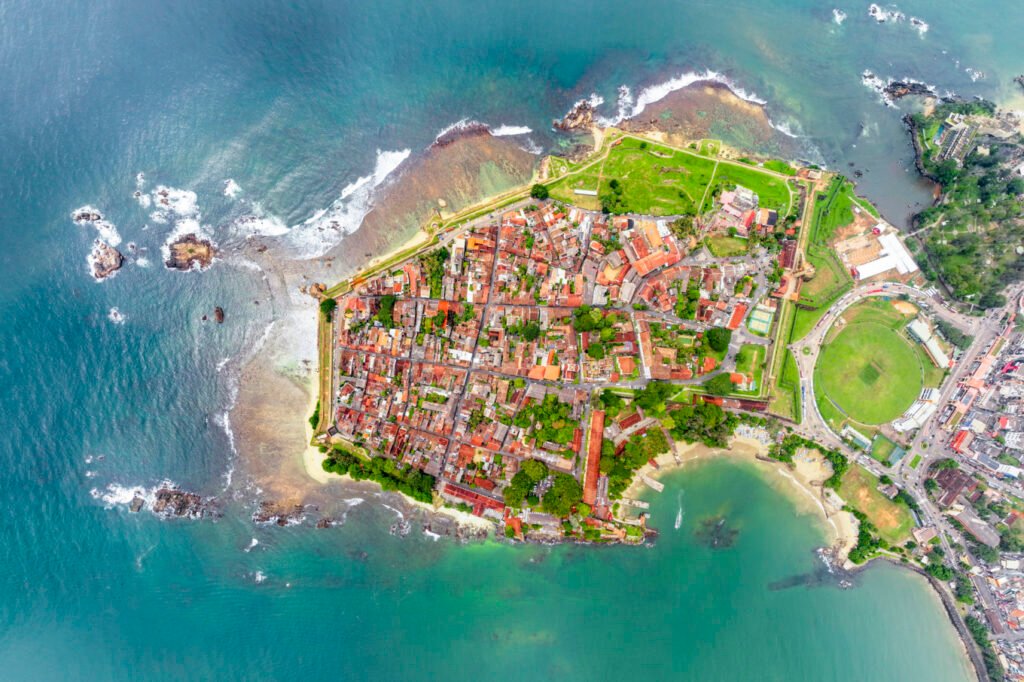

Centered around the Dutch-style fortress, the twelve bastions and defensive structures exude an exotic charm, blending European architectural artistry with South Asian cultural traditions. It is a quintessential example of European-built defensive fortresses in South Asia and Southeast Asia. Over the course of four centuries, the lighthouse, fortifications, churches, villas, and streets within the fortress have been well preserved, making it the best-preserved seaside fortress in South Asia. In 1988, Galle Fort was designated as a UNESCO World Cultural Heritage Site. Within this castle, which still retains its ancient charm, many houses and inns with small shops are available for tourists to stay in.


The most prominent part of the sea wall is called Flag Rock, echoing the lighthouse. During the Dutch colonial period, all approaching ships would receive signals here warning them of dangerous rocks nearby. Today, this place has become a spot to admire the sunrise and sunset over the ancient city of Galle and a location where locals enjoy cliff diving. In the evening, standing on Galle’s seawall with your back to the lighthouse, you can witness the magnificent Indian Ocean sunset. Not only can you feel the ambiance left by bygone eras, but you can also see the continuation of modern life.
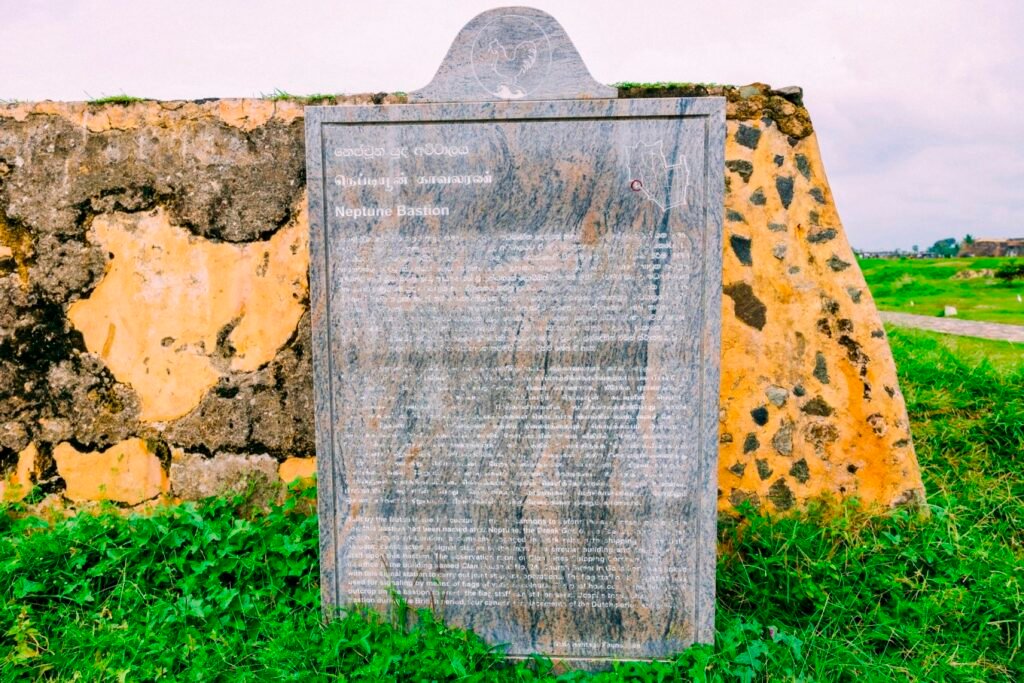


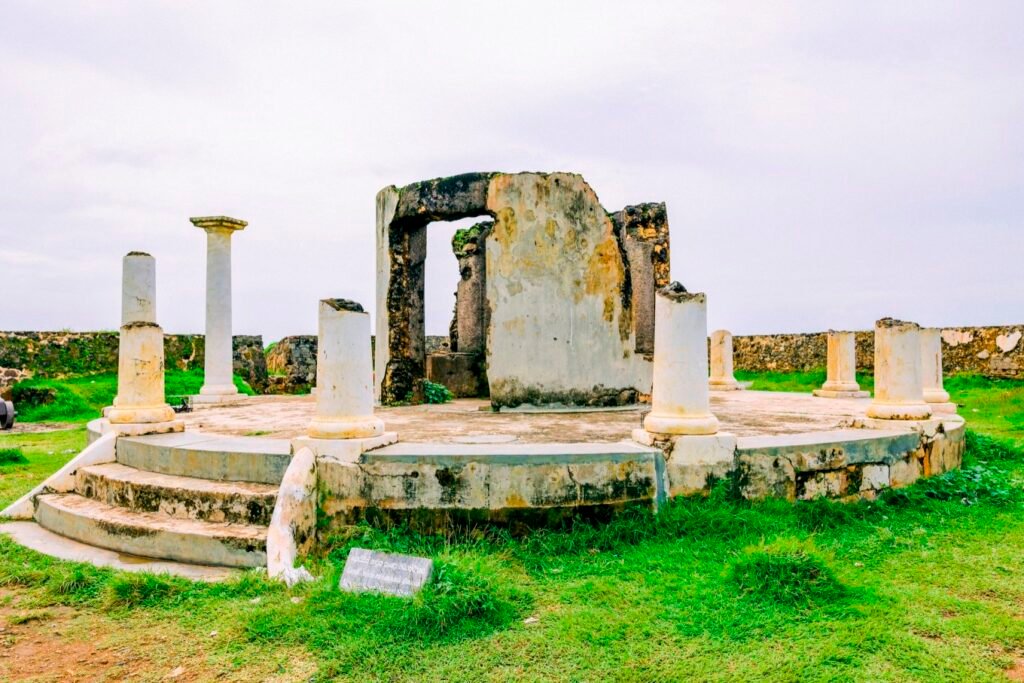
The existence of Galle Old Town fully showcases the mutual influence between European architecture and South Asian traditional architecture during the 17th to 19th centuries. Local architects modified the original European architectural models to adapt these buildings well to Sri Lanka’s geography, climate, history, and cultural conditions. Besides the fortress, military buildings such as official residences, armories, and powder magazines were built within the city walls. Near the harbor, there were commercial buildings and warehouses. The residences built by the Dutch and the polished stone walls and gates beautified the tranquil streets of the old city and remain intact to this day. The coastal area still retains the ancient batteries built by the Dutch.


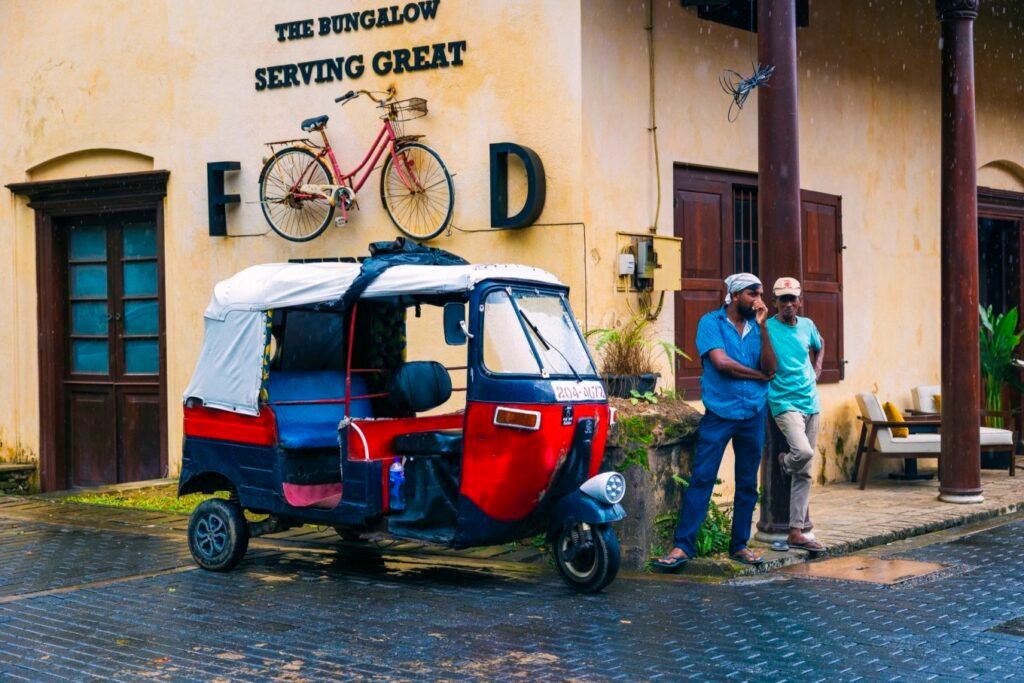
Walking through the ancient city of Galle, you realize that the fortress isn’t very large, with only a few streets crisscrossing and about 400 houses of various sizes scattered around. Interspersed among them are churches, museums, schools, residences, and barracks. We also saw administrative institutions like the post office and courthouse and found that some buildings have been abandoned. Strolling here is the best way to feel the atmosphere of those ancient Western buildings. Two churches left a deep impression. The white exterior of the Dutch Reformed Church, also known as the Dutch Church, still houses an organ from 1760. The other is the Dutch Anglican Church, built in 1868, featuring a splendid Gothic exterior.


The fortress has two main entrances, one through the gate of the Zwart Bastion. This bastion is one of the oldest surviving structures of the fortress, originally built during the Portuguese occupation. The ancient fortress uses a network of intersecting roads to form a rigorous grid-like layout. A large Baroque-style cathedral is located at the center of the fortress, which is the first Protestant chapel built in Sri Lanka. Designed by architect Abraham Anthonisz and completed in 1775, the church has a cruciform plan with a longer nave and shorter transepts. The church lacks a central tower but features triangular pediments with rich moldings and double volute decorations on the east and west gables, reflecting the influence of indigenous Sri Lankan culture. The interior is bright due to long vertical windows facing west and round windows facing other directions. The high vaulted ceiling is decorated with a sky-blue background dotted with silver stars, depicting a vast sky scene. The hexagonal pulpit inside is one of the best of its kind in Sri Lanka, equipped with a large sound-reflecting board protruding from the wall. Rows of backed benches are arranged along the walls. Under the church, there is a small crypt used to bury important figures within the church.
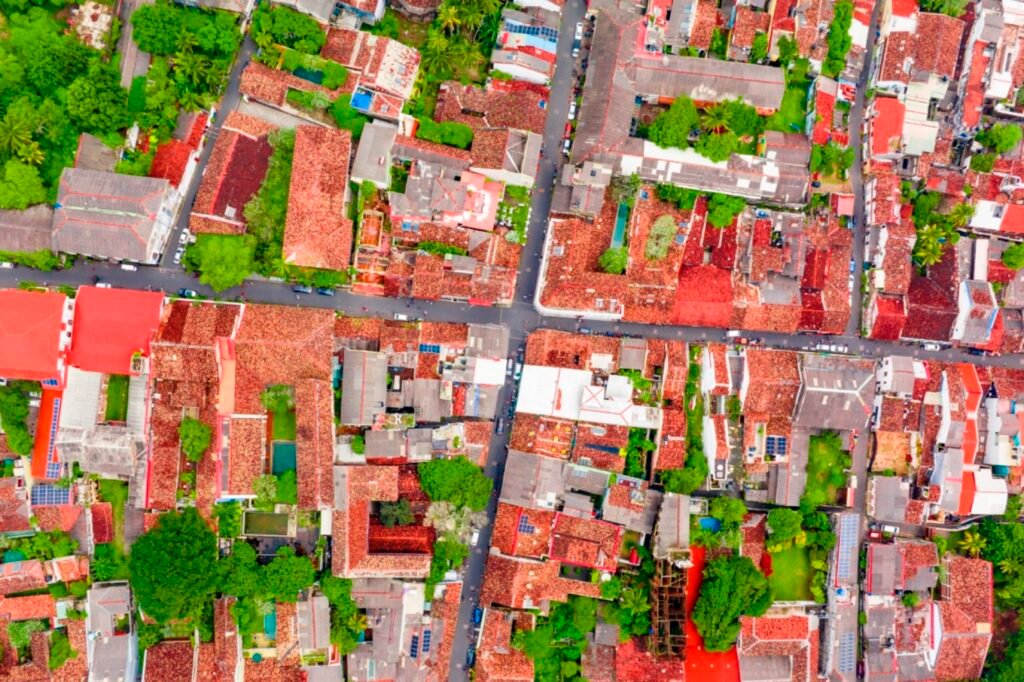

The street network system of Galle Old Town adopts a grid layout where main roads intersect with secondary streets—a typical town planning method in Sri Lanka at that time. Long rows of single-story houses with terracotta-tiled roofs are built facing the street. The tops of the houses are supported by round brick columns or wooden pillars, forming a veranda along the street, like a neat row of tree walls separating and connecting the houses and the street. Wooden railings installed between the columns enhance the perspective effect of the street scene created by the colonnade. The entrance of the house is generally located in the center of the facade, with varied fan-shaped windows and window lintels to avoid repetition and monotony.
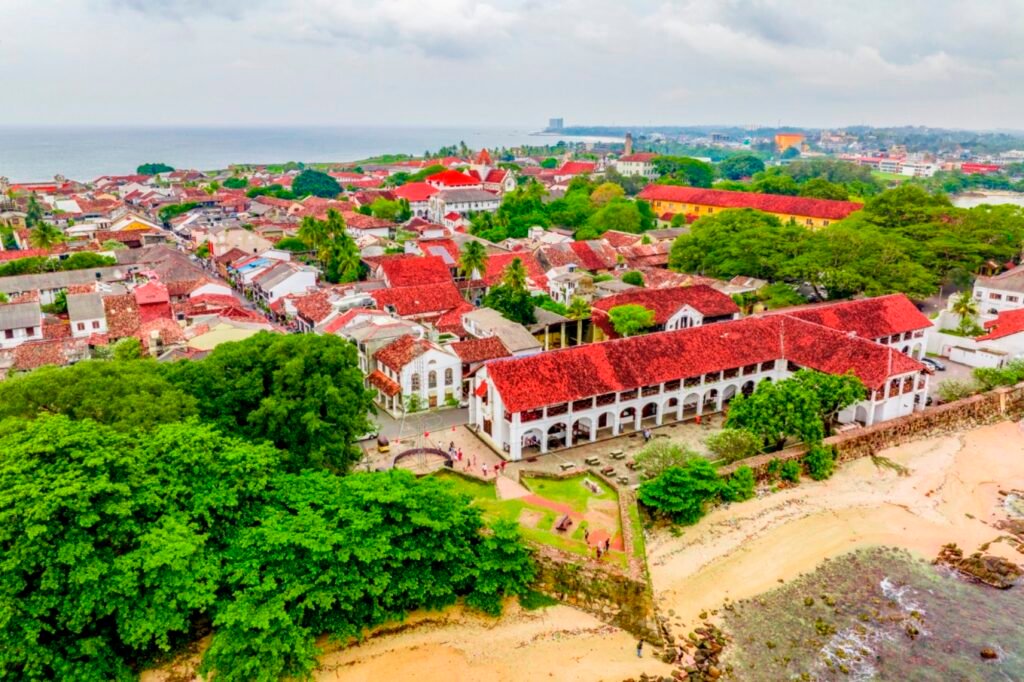

Important institutions and facilities within the fortress include the Governor’s Mansion, Cabinet Office Building, City Hall, Courthouse, residences of administrative officials, Tax Office, Exchange, Ammunition Depot, Blacksmith Shop, Labor Hospital, Ship Workshop, Naval Guard Barracks, Coconut Warehouse, Rope Factory, Mosque, Javanese Quarter, as well as various warehouses and cellars. Although many of these buildings have been repurposed over time, their original types are still easily identifiable. Most buildings in the fortress are constructed facing the street and have back gardens or courtyards. People access the back gardens through narrow alleys or passages set between buildings.
Visiting the Galle Fort, one can appreciate the blend of Western architecture and traditional South Asian styles. However, for Sri Lankans, this place carries a painful history of colonization. It is like a scar on the nation, an unforgettable and sorrowful memory. Today, Sri Lanka is a country with deep-rooted faith, where Buddhism is ingrained in people’s hearts. On this land, people value harmony, tolerance, and kindness—these are the reasons behind their smiles. People’s smiles are like sunshine, illuminating the world of others. This positive energy also makes the country even more beautiful.
Although many people think that Sri Lanka is not worth visiting because of its national bankruptcy, we didn’t find much connection to that during our visit. The locals still face everyone with happy smiles and live their lives in their own ways. During this season, many tourists from all over the world come here. The sea, beaches, forests, mountains, and culture attract many visitors who long for them. We especially recommend this place to those who love humanistic photography; behind your lens at every moment will be beautiful smiles.

